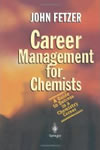All Articles
Accident Investigation & Reconstruction
Hazardous Materials
Accident Prevention & Safety
Hydrology
Accounting
Industrial Hygiene and Safety
Addiction Issues & Substance Abuse
Investigation & Surveillance
Animals
Jails - Prisons - Correctional Facilities
Archaeology - Archeology
Land Use
Architecture
Law Enforcement
Artificial Intelligence (AI) / Machine Learning (ML)
Legal Issues
Attorney Fees
Linguistics
Biokinetics
Manufacturing
Blockchain Information
Medical - Medicine
Boating
Metallurgy
Child Witch Phenomenon
Neuropsychology
Construction
Nonprofit Organizations
Criminology
Pain Management
Discovery & Electronic Discovery
Patents
Economics
Pharmaceuticals
Employment
Product Liability
Environment
Professional Malpractice
Ethics / Ethical Duties
Professional Skills
Exercise & Fitness
Public Speaking
Expert Witnessing
Slip, Trip & Fall
Foreign Affairs - Geopolitics
Supply Chain Management
Forensic Analysis
Taxation
Forensics
Workplace Violence
More...

ELEVATORS-ESCALATOR-AUTOMATIC-DOORS-PAGE ARTICLES MAIN PAGE
. Contact Us if you are interested in having your work published on our website and linked to your Profile(s).
All Articles
Addiction Issues & Substance Abuse
International Trade
Alcohol, Tobacco & Other Drugs
Land Mapping - Surveying - Zoning
Anger Management & Related Issues
Laws & Procedures
Animals
Machinery
Arms - Guns - Weapons
Manufacturing
Banking
Medical - Medicine
Boating
Medical Records Review
Business Consulting
Meditation
Business Management
Metallurgy
Computer Forensics
Mining
Computers
Oil & Gas
Corrosion
OSHA
Crisis Management
Pharmacy & Pharmacology
Design
Plants & Trees
Discovery & Electronic Discovery
Public Speaking
Documentation Examination & Analysis
Radiology
Elevators - Escalator - Automatic Doors
Real Estate
Energy - Utilities
Sexual Abuse - Molestation - Harassment
Engines (Combustion - Diesel)
Slip, Trip & Fall
Expert Witnessing
Speech-Language Pathology
Finance
Spirituality
Healthcare
Supply Chain Management
Human Factors
Taxation
Hydrology
Transportation
Insurance
Yoga
More...
Featured Articles
There are no active articles here at this time. Please use the search bar, try another category, or contact us if you would like to contribute an article.
This Article is unavailable. Contact Us
Search articles by title, description, author etc.
Sort Featured Articles
Featured resources
Newsjacking: How to Inject your Ideas...
by David Meerman Scott
Career Management for Chemists: A...
by John C. Fetzer, PhD
How Insurance Companies Settle Cases
by Clinton E. Miller, JD, DABFEm FACFE
Follow us










